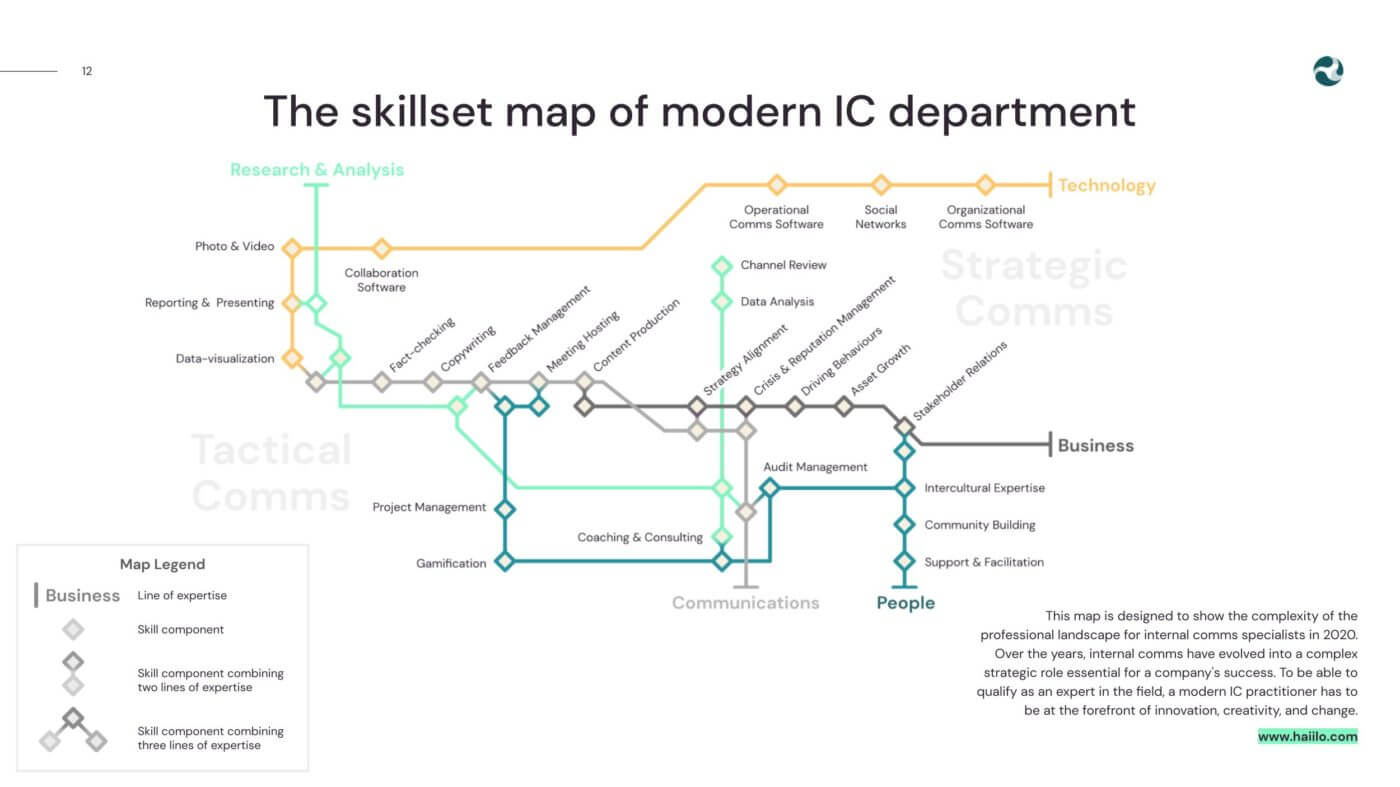
Skillset Map of a Modern IC Department
Skillset Map of a Modern IC Department
In this ebook:
01 Introduction
02 Attention is your gateway
03 Business + people formula
04 The power of community
05 Stay curious
06 Use behavioral science
07 Dare to become an advisor
08 Measure. Analyze. Act. Repeat.
09 The skillset map of a modern IC department
10 We are Haiilo.
Introduction
Employee communication is a web that reaches and influences every single person in an organization. Often it goes unnoticed how much work it takes to set up and run internal comms. On average, you’ll find 1 communication practitioner for every 1000 employees. With this much responsibility on their shoulders, IC professionals have to master various disciplines, channels, tools & skills to be able to reach every employee with relevant information.
This ebook features the research based on the materials from G2, The Institute of Internal Communication, and the book on Successful Employee Communications by Sue Dewhurst & Liam Fitzpatrick. We also reached out to seven IC professionals for their practical input on this topic. All of it, combined, has crystallized into a Skillset Map of a Modern IC Department which we encourage you to explore in more detail.
Business + people formula
Business and people savvy are the two skills that will make you valuable in 2020-s and beyond. Business savvy is really about being dialed into the business challenges that your organization faces and understanding the results that are needed to succeed in this era of disruption. Get out of the internal communication box and understand what’s going on with the global economy, climate change and the world of business.
People savvy is about understanding the people in your organization. To really connect with employees, you need to understand what they want and need to thrive. Data and metrics can help you with understanding, but you also need a
fundamental understanding of neuroscience and empathy to truly be able to listen, understand, and help leaders develop meaningful, effective communication that drives business results.
Strategic internal communication comes from combining these two skills.
The skillset map of a modern IC department
Want to know more?
Download our skillset map of a modern IC department and explore it in more detail!


